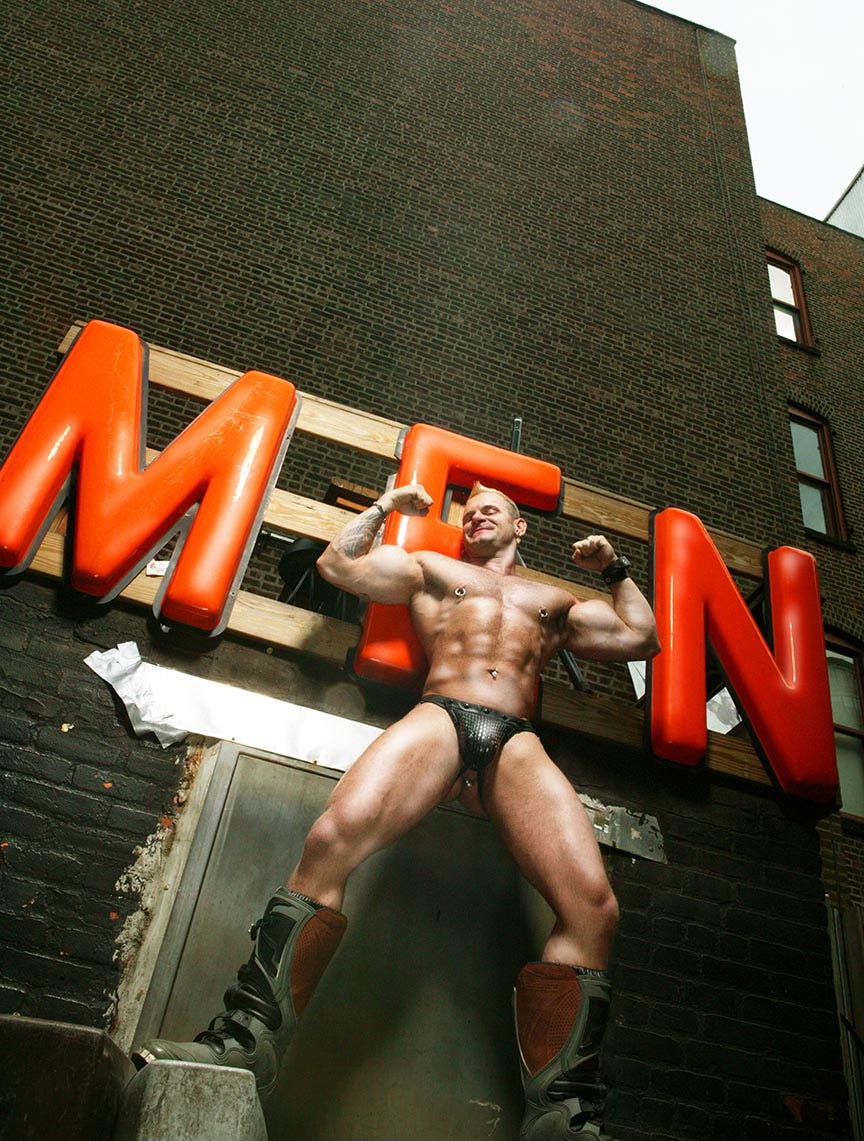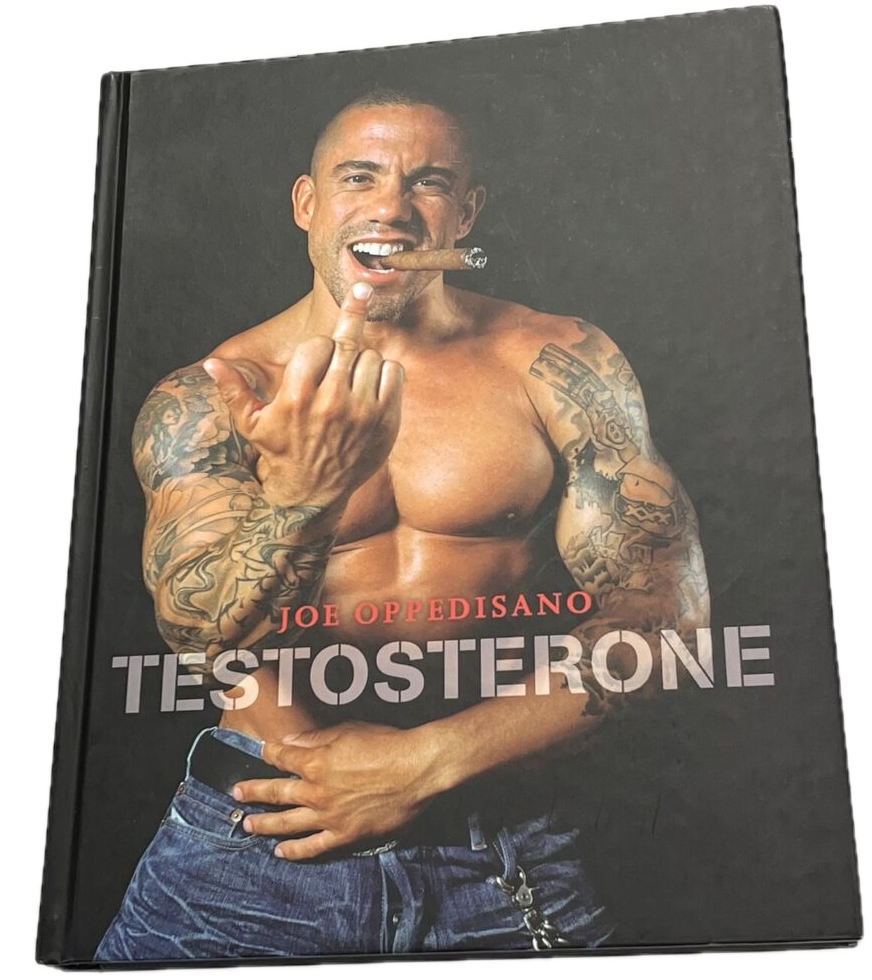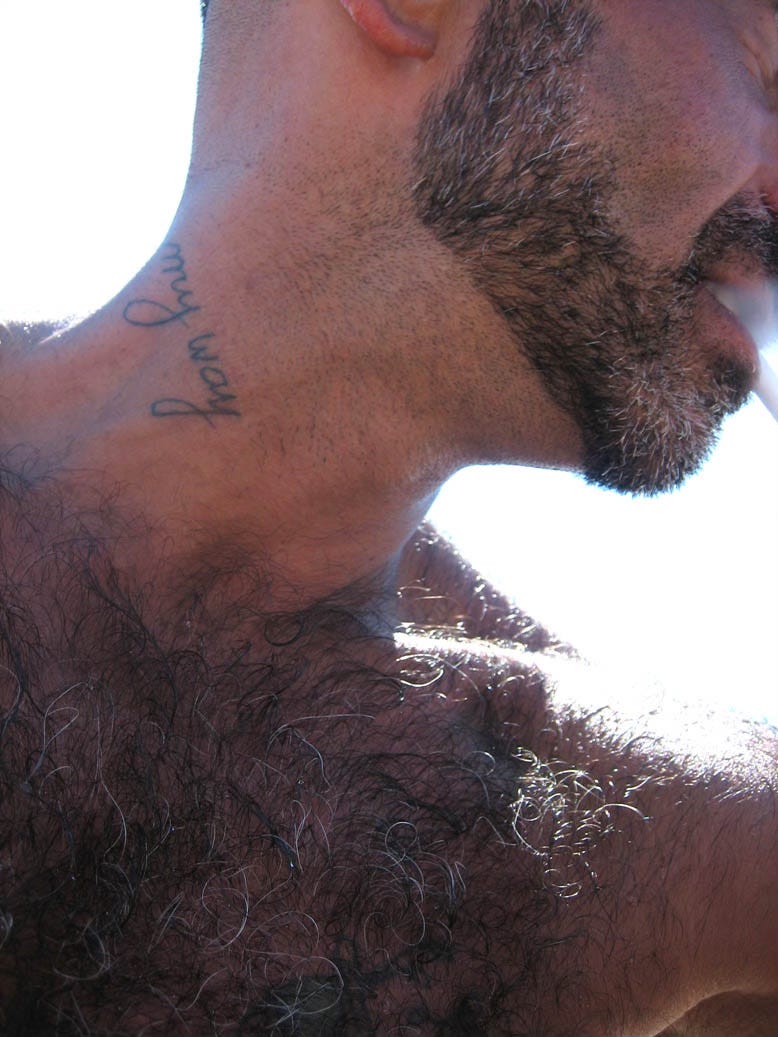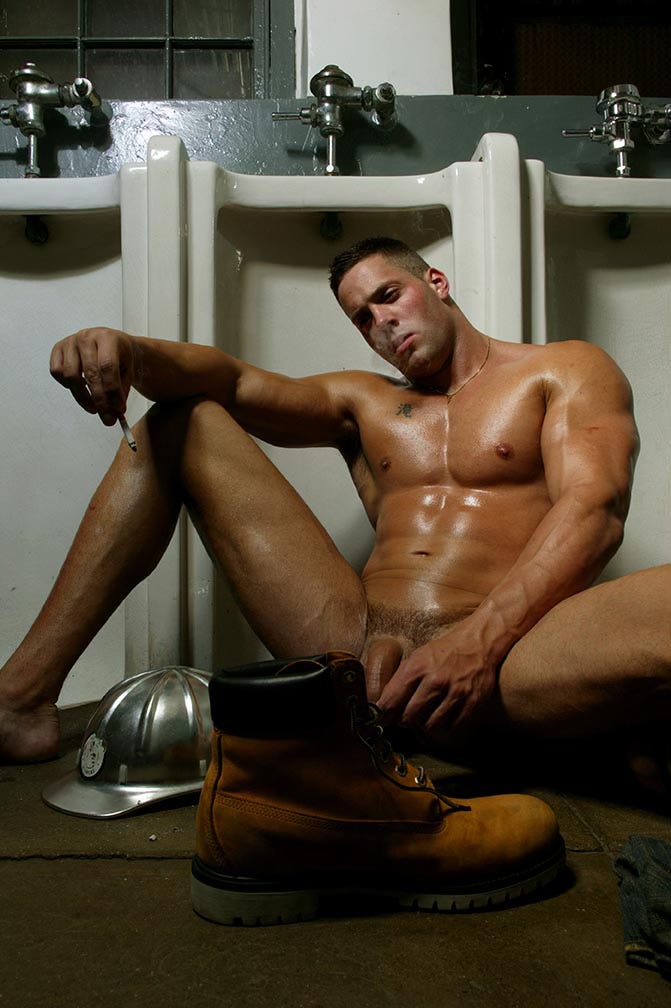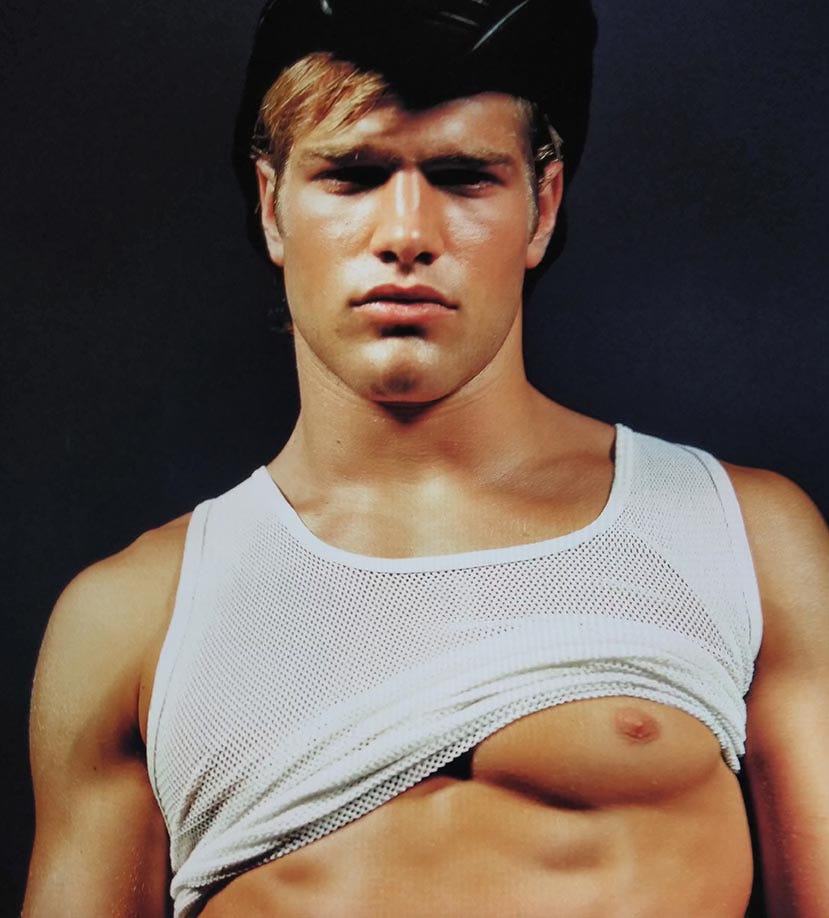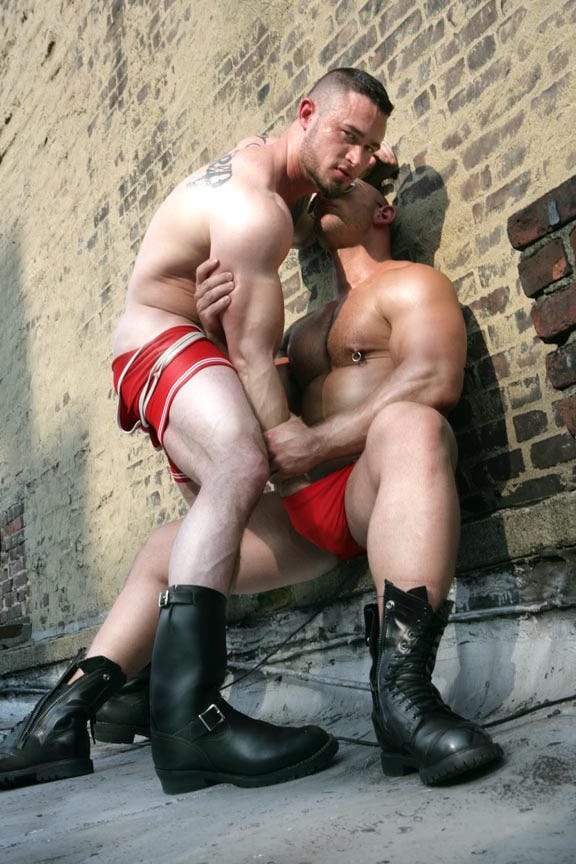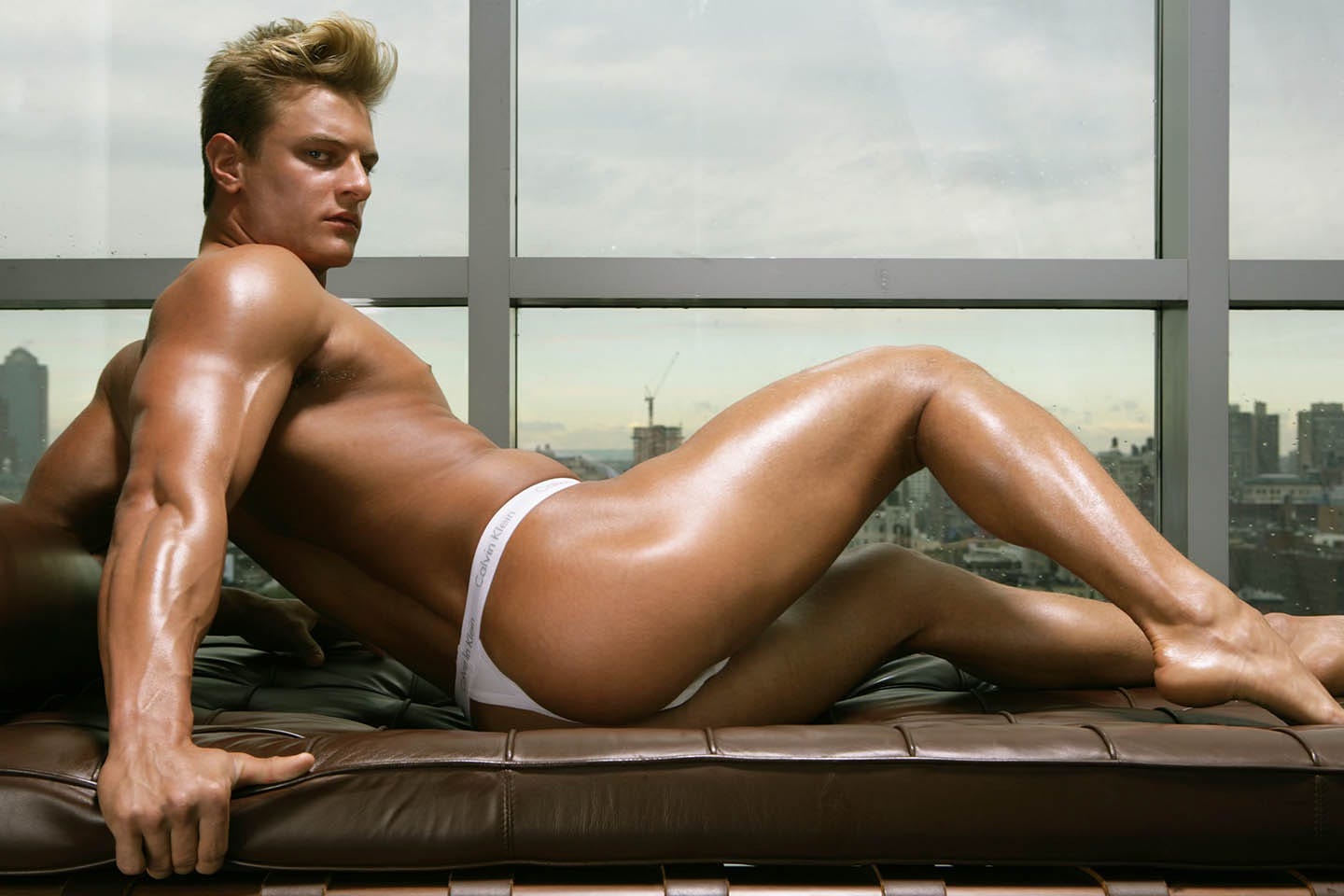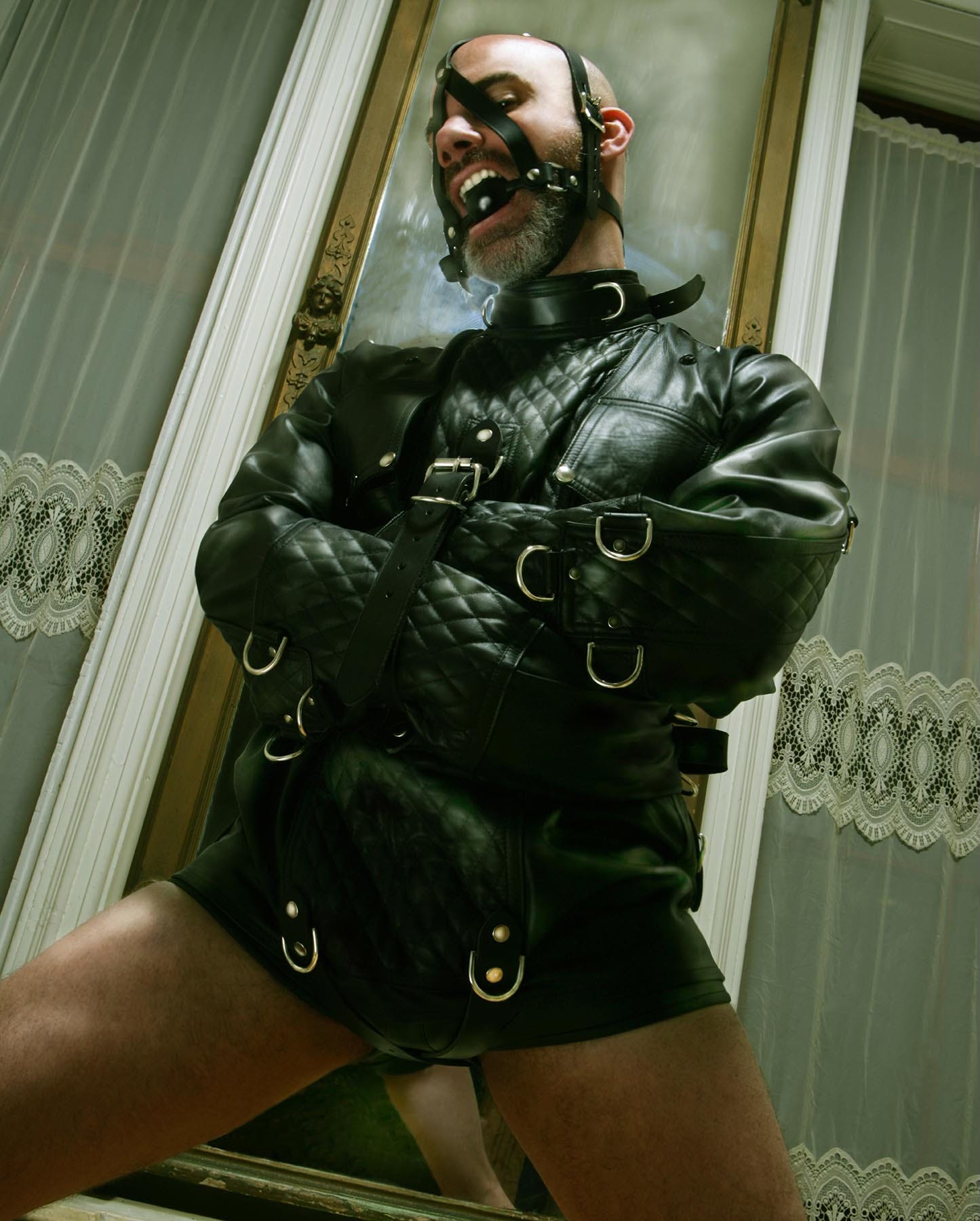Return of the Alpha Male: An Interview with Joe Oppedisano
His macho imagery expanded on and further sexualized Bruce Weber's — and he's hoping to pick up where he left off.
Long before the “toxic masculinity” debate, photographer Joe Oppedisano’s work 20 years ago turned male imagery on its head, presenting macho men with an unapologetically ironic *wink.* Channing Tatum got his start with Joe, as did Ryan Daharsh — and who can forget his ridiculously sexy captures of Joseph Sayers?
An in-demand fashion stylist, Joe published the classic 2006 book Testosterone, which (literally) gave the finger to any still harboring doubts that blatant gay sexuality was making a comeback following years in the shadow of AIDS stigma. Uncensored in 2008 and J/O in 2012 continued his run as a prevailing erotic tastemaker.
Everything changed due to a battle with addiction and an accident that nearly cost him his life. Now that he’s gotten his bearings again, he finds that his work has aged very well, and if the current algorithm tells us anything, it’s that images of hot guys are second only to fake news when it comes to what the people want in 2025.
I spoke to Joe, who sounds ready for a his 2.0.
How did you come to study art in Florence?
I went to school at FIT for textile design; I'm a textile designer. I graduated in that. Then, I went on for two more years. There was a thing called Fabric Styling, and it was going to be the first time this was ever offered. The guy who was running it was Ed Newman, who was so genius. He was 5’ tall, always wore suits — he was a really bizarre guy, but he was fabulous, and he was my mentor. He taught me everything about textiles and styling and stuff. When I took that course, the second year of it — FIT has a school in Florence, Polimoda — I could go overseas for six months to study art history. I was like, “Oh, my God, definitely.” He said I had to go. So, I went.
It was just the most amazing experience of my life. First of all, I went up the summer before and I stayed with my family in Calabria from after school, June through August. I was down at the beach and loving it. Then I went to Florence to study.
When did photography come into play?
I was never supposed to be a photographer. What happened was when I got out of FIT, before I graduated, I was doing an internship at Esquire. The last day of the internship, the editor there said to me, “I'm going to take you to a fashion show.” I met Robert Bryan, head of menswear for Fairchild Publications, which is Women's Wear Daily and W and all those magazines. I met him, and that was it — he loved me, and I went for an interview and he became my boss. I was one of the fashion editors at DNR, which was the menswear version of Women's Wear Daily. I was a stylist, really, for probably, God, nine years.
“I was never supposed to be a photographer.”
Then, I was turning 30. By that point, I was doing freelance jobs. I started doing all these really big things — I styled for Vogue, I did everything. I was actually styling Ricky Martin. I thought to myself, “This has been a great career, but what am I going to do next? How can I top this?” I wasn't really sure what was going on, but I really loved photo shoots, and that was the one thing I really fell in love with. I bought myself a $12,000 camera, and — this is on film, not even digital — I just taught myself how to shoot. Because I was working as a stylist, I was getting all these models to shoot.
Within the first year, my portfolio ... I didn't even have a portfolio, really, because I was just shooting for myself. But I had Joe Sayers, all these Abercrombie boys. One year after I started shooting, I got a book contract from Bruno Gmunder.
Was that intimidating?
I thought, “I shouldn't do this because I don't want to be labeled ‘the gay photographer.’” My agent, she's like, “Joe, this is a book. Do it the way you want to do it, make it beautiful.” So, I shot it. I sent them all the film, and they came back to me, and said, “We need 12 pages of cocks and asshole.” I hadn't shot any nudes. There was no porn or anything. It was just more fashion. They said, “To make it an erotic book, we need 12 pages of asshole and cock.” So, I called 12 of my friends. I said, “Bend over, get hard.” That was the book. That was Testosterone. It was one year. I wasn't even shooting — you couldn't call me a photographer.
But you had a style, so they picked up on that. How did you find your visual voice, especially when you were just teaching yourself as you went along?
I have to tell you — life is like this. It is being in the right place at the right time at the right moment.
I was living at 95 Christopher Street, a landmark building in the West Village, okay? Who's been my next-door neighbor for five years but Amy Sedaris. That was my neighbor for 15 years while she was writing her first book. We're really good friends. We're in each other's house smoking pot, and then she's doing her first book, and I'm doing mine at the same time. So, we're editing each other's books and whatever. I felt my voice, really, because I had someone like that that I could show stuff, and she'd be like, “Too gay,” or, “I hate that,” or whatever.
But then, also, I was seeing all these Abercrombie & Fitch boys. I could get any model, anybody, from all these bodybuilder agencies. So, I'm seeing all these straight bodybuilders and stuff. I was trying to figure out my lighting and how I wanted it visually to be. I guess one time, I just got my pro photos, I put them up on a stand and I put a beauty dish that bounces this silver, beautiful light. It's what you use when you're photographing, like, cosmetics, like, beauty products. So, it's this really beautiful light — and I shot that down on a model.
It looked great! And that ended up being my trademark. Look, I always think ... I've said before, every picture I've ever taken is really the same picture. It's the same, exact lighting. It's just different angles and stuff. It's just different situations and different models. But it's all linked.
“Every picture I’ve ever taken is really the same picture.”
When you started getting all this attention for the book, did you envision it as a true career switch and as something that would support you?
No, it wasn't that. Because what happened was, as soon as the book came out, nobody hired me. Nobody. What could I do? All of a sudden, all the porn companies called and I started getting contracts with Falcon and CockyBoys, that stuff. That's how I supported myself, because the [first] book, it ruined me. At the same time that I was doing all this great stuff, it ruined me — because all of a sudden, all my money jobs stopped hiring me.
You didn't want to become the gay photographer, yet ... you became the gay photographer.
You know what? I was very lucky because I had made a good amount of money working as a stylist through all these freelance jobs. I was making really good money. And I had the money to spare. And I had all these Abercrombie boys who just did what I said. And I think that's the thing about me. I've always had ... I'll tell you this, it's a weird thing. People, no matter where I go, people come up to me and tell me the most personal, intimate things you can imagine. People have always done that for me.
So, as a photographer, when you're in front of me [as a model for me], people will do anything I ask them to.




